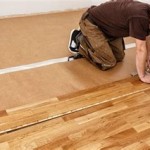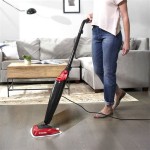Pet Urine Stains on Wood Floors: Identification, Removal, and Prevention
Wood floors, prized for their aesthetic appeal and durability, are vulnerable to damage from pet urine. The organic composition of urine, coupled with its acidic nature, can lead to staining, odor, and structural deterioration of wood flooring. Understanding the mechanisms by which urine affects wood, identifying the type and severity of the damage, and implementing appropriate cleaning and preventative measures are crucial for maintaining the integrity and appearance of wood floors in pet-owning households.
The interaction between pet urine and wood flooring involves a series of complex chemical and physical processes. Primarily, the uric acid present in urine reacts with the wood's cellulose and lignin components. This reaction can lead to discoloration, etching, and even changes in the wood's cellular structure. Moreover, the moisture content of urine penetrates the wood's porous surface, causing swelling and potential warping. Prolonged exposure allows bacteria and fungi to thrive, further exacerbating the damage and contributing to persistent odors.
The type of wood flooring significantly influences its susceptibility to urine damage. Softwood species, such as pine and fir, are more porous and absorbent than hardwoods like oak and maple. Consequently, softwood floors tend to stain and absorb odors more readily. The type of finish applied to the wood also plays a critical role. Surface finishes, like polyurethane, provide a protective barrier against moisture penetration, whereas penetrating finishes, such as oil-based sealers, offer less protection and allow urine to seep into the wood more easily. Regular maintenance, including the prompt removal of accidents and consistent cleaning, is paramount in minimizing the potential damage caused by pet urine.
Identifying the Severity of Urine Damage
Accurately assessing the severity of urine damage is essential for determining the most effective course of action. The initial stage typically involves surface staining and a noticeable urine odor. Minor stains may appear as light discoloration and can often be addressed with enzymatic cleaners or mild bleaching solutions. However, if the urine has penetrated deeper into the wood, the stains will be darker and more pronounced, indicating more extensive damage. A strong, lingering urine odor is another sign of significant penetration.
In cases of prolonged exposure, the wood may exhibit signs of physical deterioration, such as warping, cupping (where the edges of the boards raise), or even rotting. Dark black stains often indicate mold growth, a serious issue that requires professional remediation. In severe cases, the structural integrity of the flooring may be compromised, necessitating replacement of the affected boards. A thorough inspection, including a visual assessment of the stains, an odor test, and a moisture reading, is crucial for determining the extent of the damage and selecting the appropriate treatment method. A moisture meter can accurately measure the moisture content of the wood, providing valuable information about the depth of penetration and the potential for mold growth.
Visible signs are not always indicative of the true extent of urine contamination. Urine can seep between floorboards and into the subfloor, creating hidden reservoirs of odor and potential damage. In such cases, specialized detection methods, such as ultraviolet (UV) light inspection, may be necessary. UV light causes urine stains to fluoresce, making them visible even in areas that appear clean to the naked eye. This technique allows for a more comprehensive assessment of the affected area and ensures that all traces of urine are properly addressed.
Effective Cleaning and Stain Removal Techniques
The approach to cleaning pet urine stains from wood floors varies depending on the severity and age of the stain. For recent accidents, immediate action is critical. Blotting up the urine with absorbent materials, such as paper towels or cloths, is the first step. Avoid rubbing, as this can spread the urine and force it deeper into the wood. Once the excess urine has been removed, the area should be thoroughly cleaned with an appropriate cleaning solution.
Enzymatic cleaners are generally recommended for removing pet urine stains and odors. These cleaners contain enzymes that break down the uric acid crystals, effectively neutralizing the odor and preventing re-soiling. It is crucial to choose an enzymatic cleaner specifically formulated for pet urine and to follow the manufacturer's instructions carefully. The cleaner should be applied liberally to the affected area and allowed to dwell for the recommended time before being blotted up. Multiple applications may be necessary to fully remove the stain and odor.
For older or more stubborn stains, more aggressive cleaning methods may be required. Mild bleaching solutions, such as hydrogen peroxide, can be effective in lightening the stain. However, it is essential to test the solution in an inconspicuous area first to ensure that it does not damage the finish or discolor the wood. Apply the hydrogen peroxide to the stain, let it sit for a few minutes, and then blot it up. Repeat as necessary until the stain is visibly reduced. Always wear gloves and eye protection when working with bleaching solutions.
In cases of deep penetration, sanding and refinishing the affected area may be the only option. This involves removing the existing finish and sanding down the wood to remove the stained layers. The area is then refinished with a new coat of sealant and finish. This process should be performed by a professional, as improper sanding can damage the wood and lead to uneven results. It is also important to match the new finish to the existing finish to ensure a seamless appearance.
For persistent odors that linger even after cleaning, consider using an odor-absorbing product, such as baking soda or activated charcoal. Sprinkle the product liberally over the affected area and let it sit overnight before vacuuming it up. These materials help to absorb the remaining odors and leave the area smelling fresher. Air purifiers with activated carbon filters can also help to remove airborne odors and improve the overall air quality in the room.
Preventative Measures to Protect Wood Floors
Preventing pet urine accidents is the most effective way to protect wood floors. Regular housetraining, providing ample opportunities for pets to relieve themselves, and addressing any underlying medical conditions that may contribute to accidents are all important preventative measures. For puppies and older dogs prone to accidents, consider using absorbent training pads or diapers to protect the floors.
Protective floor coverings can also help to minimize the risk of urine damage. Area rugs and mats can provide a barrier against spills and accidents, especially in areas where pets frequently spend time. Choose rugs and mats with waterproof backings to prevent urine from soaking through to the floor. Regularly clean and disinfect these coverings to prevent the buildup of odors and bacteria.
Applying a high-quality sealant to the wood floor can also provide added protection against moisture and stains. Polyurethane finishes are particularly durable and resistant to water damage. Ensure that the sealant is properly applied according to the manufacturer's instructions, and consider applying multiple coats for maximum protection. Regularly inspect the finish for any signs of wear or damage and reapply as needed.
Routine cleaning and maintenance are essential for preventing the buildup of urine and other contaminants. Regularly sweep or vacuum the floors to remove dirt and debris that can scratch the finish and create pathways for urine to penetrate the wood. Clean the floors with a pH-neutral cleaner specifically designed for wood floors. Avoid using harsh chemicals or abrasive cleaners, as these can damage the finish and dull the appearance of the wood. Promptly address any spills or accidents to minimize the risk of staining and odor.
Finally, consider the dietary factors that may contribute to increased urine production. Some pet foods contain ingredients that can increase the amount of urine produced, making accidents more likely. Consult with a veterinarian to determine the best diet for your pet and ensure that they are properly hydrated. Providing fresh water at all times and encouraging regular urination can help to minimize the risk of accidents and protect your wood floors.

How To Remove Pet Stains From Hardwood Floors

How To Remove Pet Urine Stains From Hardwood Floor With Hydrogen Peroxide

What If My Hardwood Floor Has Pet Stains

Dog Scratches Cat Pee On Wood Floors Pete S

What If My Hardwood Floor Has Pet Stains

How To Remove Pet Stains From Hardwood Floors

Way To Remove Pet Urine From Hardwood Floors Renovating An Abandoned 3 Family Part 20 Youtube

How To Remove Pet Urine Stains From Wood Floors Guaranteed

How To Remove Pet Urine Stains From Wood Floors Floor Sanding

How To Remove Pet Urine Stains From Hardwood Floors Youtube







